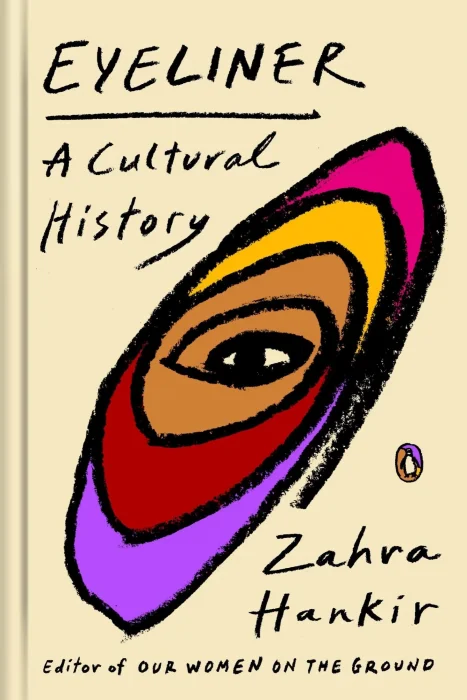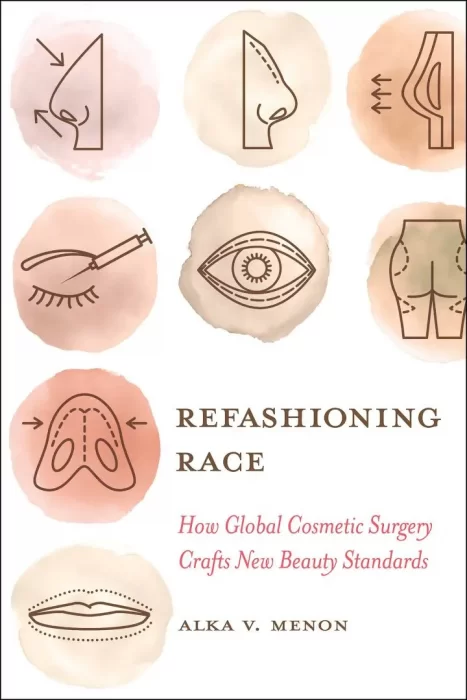Eyeliner: A Cultural History

Date: November 14th, 2023
ISBN: 0143137093
Language: English
Number of pages: 368 pages
Format: EPUB
Add favorites
“Cosmetic, tool of rebellion, status signifier: Eyeliner has been all these and more. Moving through millenniums and across civilizations, Hankir gives the makeup its eye-opening due.” —The New York Times Book Review
“I loved Eyeliner. Hankir approaches her subject with dedicated curiosity, humility, and humor, blending anthropology, travel writing, memoir and history. A treat.” —Kassia St. Clair, author of The Secret Lives of Color
From the acclaimed editor of Our Women on the Ground comes a dazzling exploration of the intersections of beauty and power around the globe, told through the lens of an iconic cosmetic
From the distant past to the present, with fingers and felt-tipped pens, metallic powders and gel pots, humans have been drawn to lining their eyes. The aesthetic trademark of figures ranging from Nefertiti to Amy Winehouse, eyeliner is one of our most enduring cosmetic tools; ancient royals and Gen Z beauty influencers alike would attest to its uniquely transformative power. It is undeniably fun—yet it is also far from frivolous.
Seen through Zahra Hankir’s (kohl-lined) eyes, this ubiquitous but seldom-examined product becomes a portal to history, proof both of the stunning variety among cultures across time and space and of our shared humanity. Through intimate reporting and conversations—with nomads in Chad, geishas in Japan, dancers in India, drag queens in New York, and more—Eyeliner embraces the rich history and significance of its namesake, especially among communities of color. What emerges is an unexpectedly moving portrait of a tool that, in various corners of the globe, can signal religious devotion, attract potential partners, ward off evil forces, shield eyes from the sun, transform faces into fantasies, and communicate volumes without saying a word.
Delightful, surprising, and utterly absorbing, Eyeliner is a fascinating tour through streets, stages, and bedrooms around the world, and a thought-provoking reclamation of a key piece of our collective history.
“I loved Eyeliner. Hankir approaches her subject with dedicated curiosity, humility, and humor, blending anthropology, travel writing, memoir and history. A treat.” —Kassia St. Clair, author of The Secret Lives of Color
From the acclaimed editor of Our Women on the Ground comes a dazzling exploration of the intersections of beauty and power around the globe, told through the lens of an iconic cosmetic
From the distant past to the present, with fingers and felt-tipped pens, metallic powders and gel pots, humans have been drawn to lining their eyes. The aesthetic trademark of figures ranging from Nefertiti to Amy Winehouse, eyeliner is one of our most enduring cosmetic tools; ancient royals and Gen Z beauty influencers alike would attest to its uniquely transformative power. It is undeniably fun—yet it is also far from frivolous.
Seen through Zahra Hankir’s (kohl-lined) eyes, this ubiquitous but seldom-examined product becomes a portal to history, proof both of the stunning variety among cultures across time and space and of our shared humanity. Through intimate reporting and conversations—with nomads in Chad, geishas in Japan, dancers in India, drag queens in New York, and more—Eyeliner embraces the rich history and significance of its namesake, especially among communities of color. What emerges is an unexpectedly moving portrait of a tool that, in various corners of the globe, can signal religious devotion, attract potential partners, ward off evil forces, shield eyes from the sun, transform faces into fantasies, and communicate volumes without saying a word.
Delightful, surprising, and utterly absorbing, Eyeliner is a fascinating tour through streets, stages, and bedrooms around the world, and a thought-provoking reclamation of a key piece of our collective history.
Download Eyeliner: A Cultural History
Similar books
Information
Users of Guests are not allowed to comment this publication.
Users of Guests are not allowed to comment this publication.




